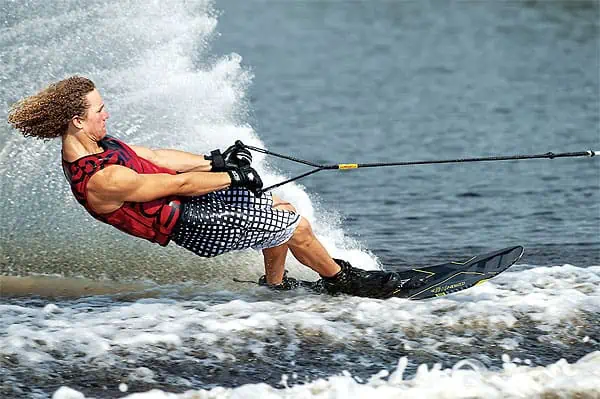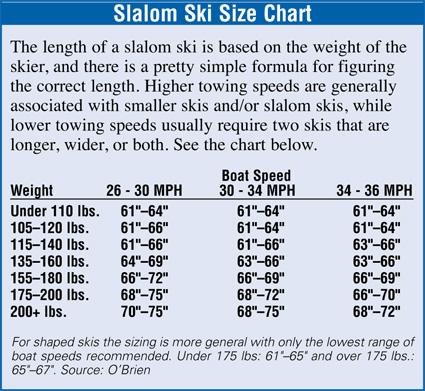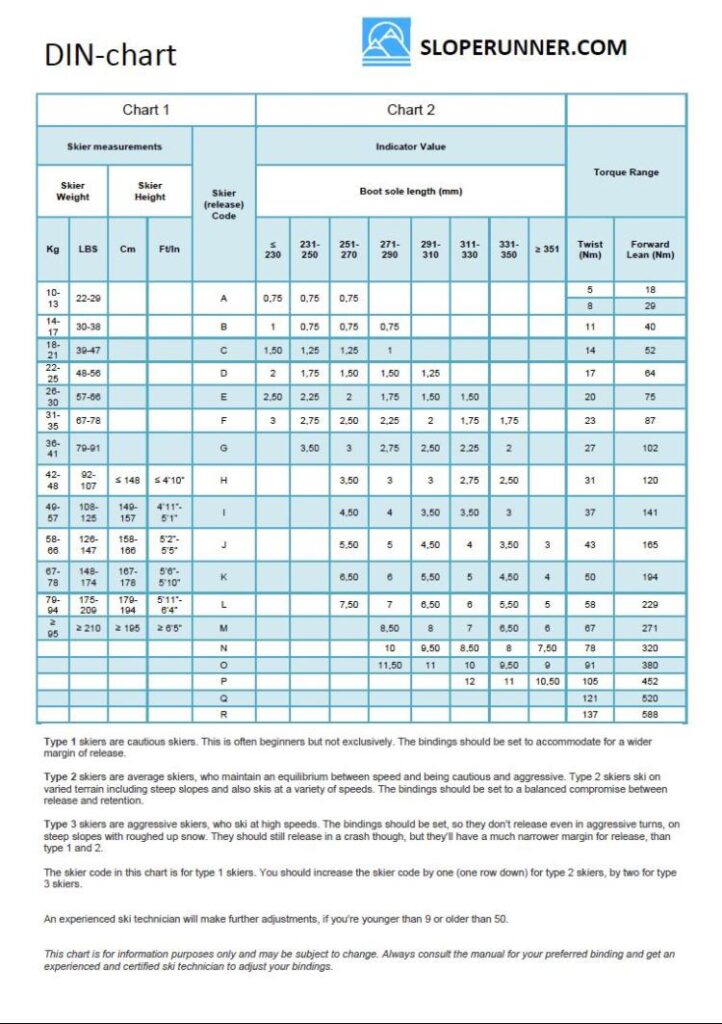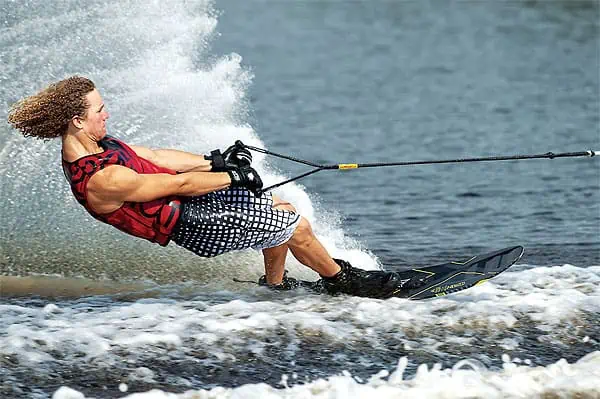
In this helpful guide, you will discover how to select the perfect size and style of water ski bindings. Whether you’re a beginner or an experienced water skier, finding the right fit is essential for comfort and performance on the water. We’ll explore the factors to consider when choosing the correct binding size and discuss the various styles available to suit your individual preferences. So grab your skis and let’s dive into the world of water ski bindings!

This image is property of www.westmarine.com.
Understanding Water Ski Bindings
Water ski bindings are an essential component of any water skiing setup. They serve the purpose of securely attaching your feet to the water skis, providing both balance and control as you glide across the water. It is crucial to choose the right size and style of water ski bindings to ensure a comfortable and enjoyable skiing experience.
Purpose of Water Ski Bindings
The primary purpose of water ski bindings is to keep your feet firmly in place on the skis. They are designed to provide stability and control while allowing enough flexibility for easy maneuverability. Additionally, water ski bindings protect your feet from injuries and reduce the risk of accidents by preventing your feet from slipping out of the skis.
Types of Water Ski Bindings
There are primarily two types of water ski bindings: closed toe bindings and open toe bindings. Closed toe bindings feature a complete enclosure around your toes, providing a snug fit and added protection. Open toe bindings, on the other hand, have an open front design that allows for multiple foot sizes, making them ideal for shared skis or accommodating different riders.
Determining the Right Size
Choosing the correct size of water ski bindings is crucial for optimal performance and safety on the water. Two key factors to consider when determining the right size are foot size and skill level.
Foot Size and Binding Size
The most important aspect when selecting the right size of water ski bindings is your foot size. You should choose bindings that match your shoe size or, in some cases, a size smaller. It is important to note that different brands and models may have slight variations in sizing, so it’s always a good idea to check the manufacturer’s size chart.
Skill Level and Binding Size
Another factor to consider when determining the right size of water ski bindings is your skill level. Beginner skiers often benefit from bindings that provide more support and ease of entry, while advanced skiers may prefer bindings that offer increased flexibility for aggressive turns and jumps.
Binding Size Chart
Most manufacturers provide binding size charts that guide you in choosing the appropriate size based on your foot size. These charts typically include shoe sizes and corresponding binding sizes. It is recommended to refer to these charts as a starting point and make adjustments based on personal preference and individual foot dimensions.

This image is property of i0.wp.com.
Factors to Consider
Apart from size, there are several other factors to consider when choosing water ski bindings.
Ski Type and Style
The type of water ski you use and your skiing style can influence the type of bindings that will best suit your needs. For slalom skiing, where precision and control are crucial, bindings with a stiffer flex and increased support may be preferred. For recreational skiing or freestyle tricks, bindings with more flexibility and comfort might be a better choice.
Rider Weight and Ability
Your weight and ability level also play a role in determining the ideal bindings for your water skiing adventures. Heavier riders may require bindings that provide additional support and stability, while lighter riders may prefer bindings that offer more flexibility and maneuverability. Similarly, beginners may appreciate bindings with easy entry and exit mechanisms, while advanced skiers may prioritize performance-oriented features.
Preferences and Riding Style
Personal preferences and riding style should also be taken into account when selecting water ski bindings. Some riders may prefer a tight and supportive fit, while others may prioritize comfort and flexibility. It is essential to try different styles and models to find the bindings that align with your preferences and enhance your overall skiing experience.
Compatibility with Ski
Ensuring the compatibility of your chosen bindings with your water skis is crucial. Different skis have different mounting systems and hole patterns, and it is important to choose bindings that are compatible with your ski’s specifications. Most bindings are designed to be versatile and adaptable to various ski models, but it is always advisable to double-check for compatibility before making a purchase.
Choosing the Binding Style
There are several factors to consider when deciding between closed toe bindings and open toe bindings, as well as different heel styles and binding flex options.
Closed Toe Bindings
Closed toe bindings provide a snug fit, similar to a shoe, providing additional comfort and support. They are ideal for advanced skiers who prioritize performance and control. These bindings offer enhanced responsiveness and precision, allowing for quick and precise movements on the water.
Open Toe Bindings
Open toe bindings are designed to accommodate multiple foot sizes and are suitable for riders of various shoe sizes or those who share their skis with others. They offer a quick and easy entry and exit, making them a popular choice for beginners or casual skiers. Open toe bindings also allow for more flexibility and are generally more forgiving and comfortable over long periods of use.
Heel Styles
Water ski bindings come in different heel styles, such as fixed, floating, or rear toe plate. Fixed heels provide a secure and locked-in feel, ensuring stability and responsive control. Floating heels offer increased flexibility and natural movement, allowing for a more dynamic skiing experience. Rear toe plates are designed for slalom skiing and provide additional support and control during aggressive turns.
Binding Flex
Binding flex refers to the amount of forward and backward movement allowed in the bindings. A stiffer flex provides more support and stability, which is beneficial for slalom skiing and aggressive turns. On the other hand, a more flexible binding allows for smoother landings and better shock absorption, making it suitable for freestyle tricks and recreational skiing.

This image is property of www.wholesalemarine.com.
Flex Rating
Understanding the concept of flex rating is essential when choosing water ski bindings.
Understanding Binding Flex
Flex rating signifies the flexibility or stiffness of the bindings. It ranges from soft to stiff, with different manufacturers using their own rating systems. A higher flex rating indicates a stiffer binding, while a lower rating suggests more flexibility. Flex rating affects the responsiveness, support, and overall performance of the bindings.
Factors Affecting Flex
Several factors affect the flex of water ski bindings, including the materials used, construction techniques, and design features. Bindings made with stiffer materials, such as carbon fiber or fiberglass, tend to have a higher flex rating. Conversely, bindings with more flexible materials, like rubber or synthetic blends, have a lower flex rating.
Choosing the Right Flex Rating
Choosing the right flex rating depends on your skiing style, skill level, and personal preferences. Advanced skiers who prioritize precision and control may prefer a higher flex rating, while recreational skiers or beginners might opt for a more flexible binding for a forgiving and comfortable ride. It is essential to try out different flex ratings to determine which one suits your skiing style and provides the desired level of performance.
Binding Fit and Adjustment
Ensuring a proper fit and easy adjustment of your water ski bindings is crucial for both comfort and safety.
Importance of Proper Fit
A proper fit is crucial to ensure optimal performance and prevent discomfort or injury. Ill-fitting bindings can result in foot movement, loss of control, or excessive pressure points. It is important to choose bindings that align with your foot size and shape. Trying on different bindings and experimenting with adjustable features can help you achieve a snug and secure fit.
Adjustability and Customization
Many water ski bindings offer various adjustment options to accommodate different foot sizes and preferences. These adjustments can usually be made through Velcro straps, laces, or BOA closure systems. The ability to customize the fit allows for a personalized experience and enhances both comfort and performance.
Closure Systems (Laces, Velcro, BOA)
Closure systems play a vital role in securing your feet in the bindings. Traditional laces provide a customizable fit and can be tightened or loosened as needed. Velcro straps offer quick and easy adjustability, making them popular among skiers. BOA closure systems utilize a dial mechanism to provide precise and evenly distributed pressure, ensuring a comfortable and secure fit.

This image is property of cdn.shortpixel.ai.
Support and Performance
Support and performance features of water ski bindings can significantly impact your skiing experience.
Supportive Binding Features
Supportive binding features include elements such as reinforced heels, ankle supports, and additional padding. These features provide stability and help in maintaining control during aggressive turns and jumps. Supportive bindings are especially important for advanced skiers or those engaging in slalom skiing.
Flexibility vs Support
Finding the right balance between flexibility and support is essential when choosing water ski bindings. Flexibility allows for easier maneuverability and smooth landings, while support offers stability and responsiveness. It is crucial to consider your skill level, skiing style, and personal preferences to determine whether you prioritize flexibility, support, or a combination of both.
Performance Features
Advanced water ski bindings may offer performance-oriented features such as carbon fiber construction, customized footbeds, or increased torsional rigidity. These features enhance performance, responsiveness, and overall control. It is important to note that such bindings may come at a higher price point, so it is essential to consider your budget and skiing goals.
Matched Binding Systems
Some water ski manufacturers offer matched binding systems, where the bindings are specifically designed to complement a particular ski model. These systems ensure optimal performance by ensuring the bindings are perfectly matched to the ski’s characteristics. Although matched binding systems can enhance performance, they may limit your options if you prefer to mix and match bindings and skis.
Personal Preferences
Considering personal preferences can greatly contribute to the overall enjoyment of your water skiing experience.
Comfort and Padding
Comfort is a key factor in selecting water ski bindings. Padding and cushioning in the bindings help reduce pressure points and provide a comfortable fit. Some bindings offer additional features such as shock absorption or memory foam, further enhancing comfort. It is important to try on different bindings and assess their comfort level before making a decision.
Entry and Exit Ease
Depending on your level of experience and personal preference, you may prioritize bindings that offer easy entry and exit mechanisms. Open toe bindings generally provide quicker and easier entry and exit, while closed toe bindings require additional effort but may offer a more locked-in feel. Quick-release mechanisms can also facilitate efficient entry and exit, particularly in the event of a fall or emergency.
Binding Aesthetics
While aesthetics may not directly affect performance, they can play a role in personal satisfaction and style. Water ski bindings come in a range of colors, designs, and finishes, allowing you to choose a style that reflects your personality and complements your overall skiing gear. Selecting bindings that you find visually appealing can enhance your overall experience and confidence on the water.

This image is property of www.miamiskinautiques.com.
Considering Price Range
Price range is an important consideration when choosing water ski bindings.
Budget and Quality
It is essential to set a budget and determine the quality of bindings within that range. Higher-priced bindings often offer advanced features, materials, and customization options. However, it is possible to find quality bindings within a lower price range that still provide the necessary support and performance for a satisfying skiing experience. Balancing your budget with quality and desired features is crucial when making a purchase.
Choosing the Right Price Point
When choosing water ski bindings, it is important to remember that price is not always an indicator of superior performance or comfort. Consider your skill level, frequency of use, and skiing goals when determining the appropriate price point for your bindings. Evaluating multiple options and comparing features and customer reviews can help you make an informed decision.
Value for Money
While cost is a crucial consideration, it is equally important to assess the overall value for money when purchasing water ski bindings. High-quality bindings that offer durability, performance, and customizable features may have a higher initial cost but can save you money in the long run by providing enhanced performance and longevity. Consider the long-term benefits and potential savings when making your final decision.
Seeking Expert Advice
When in doubt, seeking expert advice can greatly assist in selecting the right size and style of water ski bindings.
Consulting with Professionals
Consulting with professionals, such as water ski instructors or experienced skiers, can provide valuable insights and recommendations. They can offer guidance based on their experience and expertise, helping you navigate through the various options and find the bindings that best suit your individual needs.
Customer Reviews and Recommendations
Reading customer reviews and recommendations can give you a broader perspective and help you understand the pros and cons of different bindings. Real-world experiences shared by other users can provide valuable insights into the performance, comfort, and durability of various bindings. Pay attention to reviews from individuals with similar skiing abilities and preferences to gain a more accurate understanding of how certain bindings may suit your needs.
Try Before Buying
Whenever possible, it is highly recommended to try on different bindings before making a purchase. Visiting a local water sports store or attending demo days organized by manufacturers or retailers can provide an opportunity to try out various bindings and determine the fit, comfort, and performance firsthand. Trying before buying allows for a more informed decision and ensures that the selected bindings meet your specific requirements.
Choosing the right size and style of water ski bindings is crucial for an enjoyable and safe water skiing experience. By considering factors such as foot size, skill level, skiing style, personal preferences, and budget, you can narrow down your options and find the bindings that best suit your needs. Taking the time to research, seek expert advice, and try different options will ultimately lead to a more rewarding and satisfying water skiing journey.






